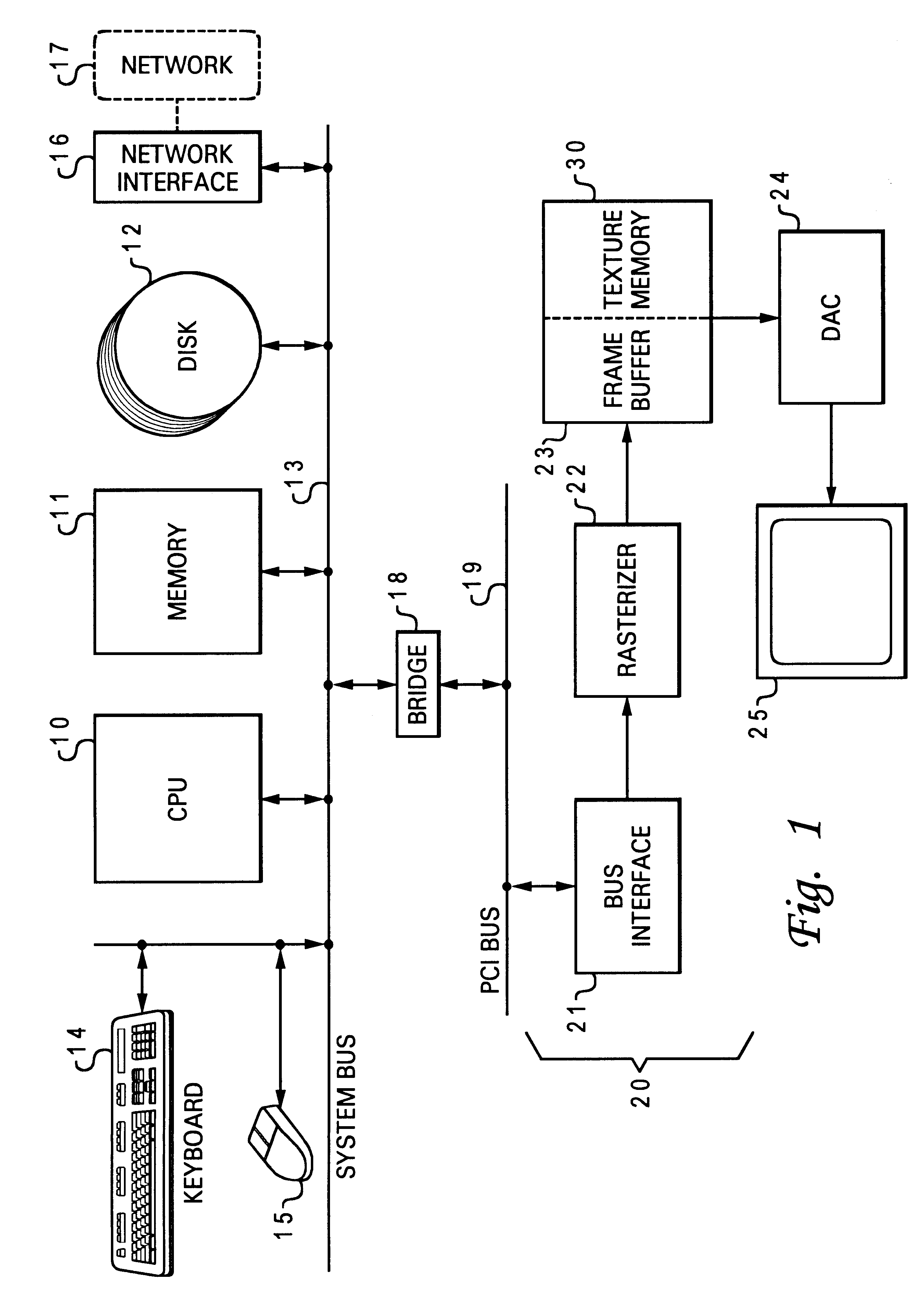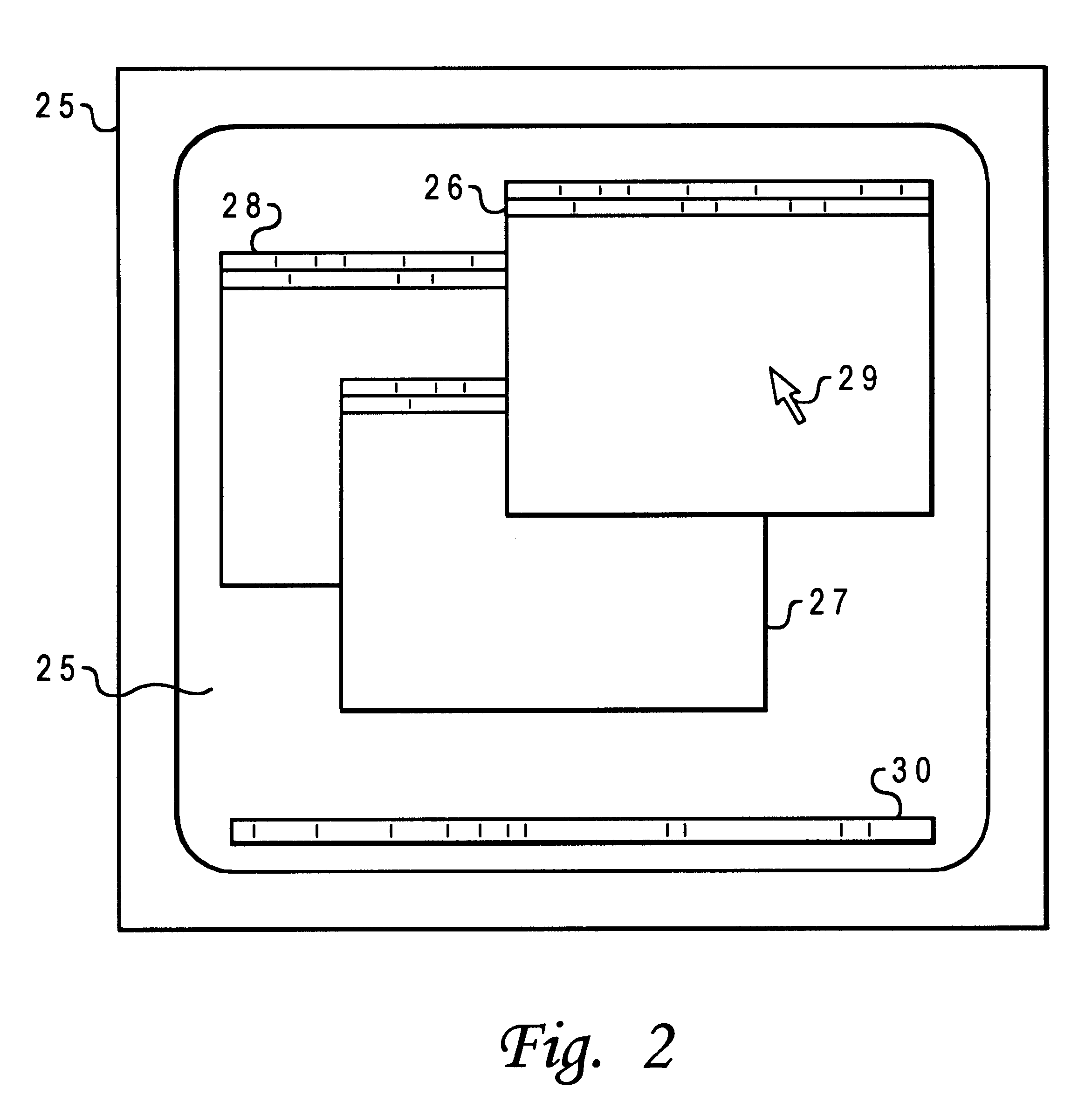Synchronizing graphics texture management in a computer system using threads
a computer system and texture management technology, applied in static indicating devices, multi-programming arrangements, instruments, etc., can solve problems such as large amount of state information, large amount of texture memory for texture-intensive images, and large compute-intensive graphics clients
- Summary
- Abstract
- Description
- Claims
- Application Information
AI Technical Summary
Benefits of technology
Problems solved by technology
Method used
Image
Examples
Embodiment Construction
Referring to FIG. 1, a computer system is shown which has a graphics display output that may utilize features of the invention. The computer system includes a CPU 10, a main (physical) memory 11, and disk storage 12, interconnected by a system bus 13. Other peripherals such as a keyboard 14, mouse 15, and adapter card 16 for interface to a network 17 are included in the computer system. The graphics subsystem is connected to the CPU and memory via a bridge 18 and PCI bus 19. This is just an example of one embodiment of a computer system and bus arrangement; features of the invention may be used in various system configurations. The graphics subsystem includes a graphics adapter 20 which may include a bus interface chip 21 described in detail in co-pending application Ser. No. 08 / 165,618, filed Oct. 2, 1998, assigned to the assignee hereof, connected to the PCI bus, 19 to handle transfer of commands and data from the CPU and memory to the graphics subsystem. A rasterizer 22 generates...
PUM
 Login to View More
Login to View More Abstract
Description
Claims
Application Information
 Login to View More
Login to View More - R&D
- Intellectual Property
- Life Sciences
- Materials
- Tech Scout
- Unparalleled Data Quality
- Higher Quality Content
- 60% Fewer Hallucinations
Browse by: Latest US Patents, China's latest patents, Technical Efficacy Thesaurus, Application Domain, Technology Topic, Popular Technical Reports.
© 2025 PatSnap. All rights reserved.Legal|Privacy policy|Modern Slavery Act Transparency Statement|Sitemap|About US| Contact US: help@patsnap.com



